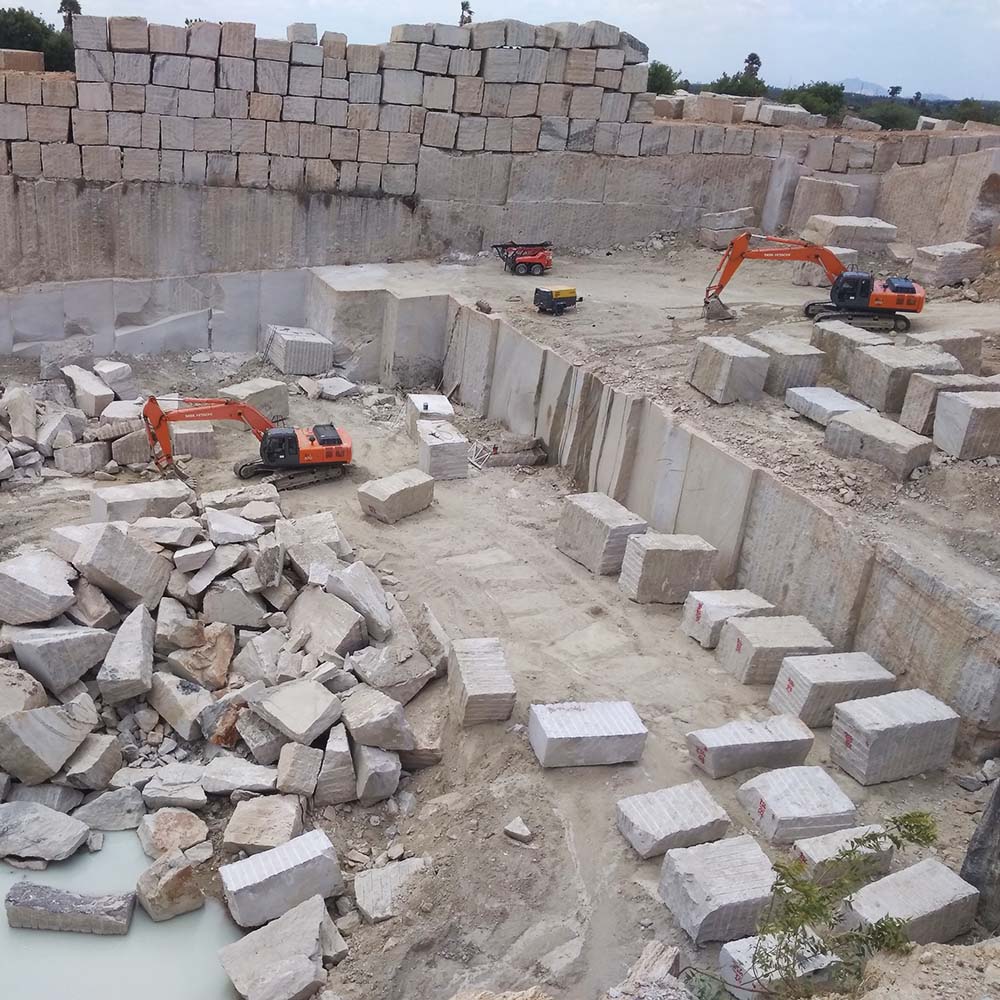Discovering the Rich Background and Sustainable Practices of Granite Quarrying
As we stand on the precipice of revealing the elaborate tapestry of granite quarrying, a journey through time reveals not simply the physical act of drawing out stone yet likewise the cultural and historic significance woven right into the extremely fabric of this technique. From the ancient beginnings that laid the structure for modern-day quarrying strategies to the lasting techniques that are shaping the future of this market, each chisel mark on granite surfaces tells a tale waiting to be uncovered (granite quarries in south africa). The legacy of granite quarrying stretches much past plain extraction; it is a testimony to human resourcefulness, durability, and the enduring attraction of this impressive stone
Old Beginnings of Granite Quarrying
Dating back to old people, the practice of quarrying granite has been an essential part of human history and architectural development. The earliest proof of granite quarrying dates back to old Egypt, where huge pyramids and elaborate sculptures were crafted from this long lasting stone. The Egyptians made use of primitive tools to draw out granite blocks from quarries, showcasing the importance of this product in their huge buildings.
Relocating ahead in history, the Greeks also made considerable payments to the quarrying of granite. The Greeks made use of granite in numerous architectural marvels, such as temples and statues, showing their skill in shaping and carving this hardy stone. The Romans even more improved the methods of quarrying granite, using sophisticated devices like blades and hammers to essence and form granite for their legendary frameworks.
Through the centuries, the method of quarrying granite has advanced, with modern-day technologies boosting effectiveness while keeping the ageless charm of this natural stone - granite quarries in south africa. From old civilizations to contemporary home builders, the legacy of granite quarrying remains to form our world
Advancement of Quarrying Strategies
The evolution of quarrying techniques has actually been marked by a constant progression towards higher effectiveness and accuracy in removing granite. Early quarrying strategies entailed hands-on labor with standard tools such as knives, hammers, and wedges to remove granite blocks from the planet.
Advancements in computer-controlled devices and 3D modeling have optimized quarrying operations, leading to marginal environmental impact and enhanced sustainability techniques. As the need for granite continues to rise, the evolution of quarrying strategies continues to be essential to conference industry requires efficiently and sustainably.
Social Importance of Granite
Granite holds a profound cultural significance throughout various civilizations due to its enduring existence in building work of arts and prized monoliths. From the magnificent pyramids of Egypt to the complex makings of the Angkor Wat holy place in Cambodia, granite has been a material of option for sharing majesty and longevity in cultural heritage. In ancient Rome, granite columns adorned temples and public structures, signifying toughness and durability. The cultural importance of granite prolongs past its physical attributes; it personifies durability, security, and timelessness, making it a sign of sustaining heritages and traditions.

Sustainable Practices in Quarrying
Amidst the abundant background of Recommended Reading granite quarrying and its cultural relevance exists a growing emphasis on lasting practices within the market. As ecological awareness and worries about resource depletion have actually increased internationally, the quarrying industry has actually progressively embraced lasting methods to decrease its effect on the environment and bordering communities.

Additionally, improvement and rehab of quarry websites post-extraction are indispensable to sustainable techniques. By restoring quarried locations to an all-natural or beneficial state, such as creating wildlife environments or leisure spaces, quarriers can balance out the environmental footprint of their procedures and add positively to the regional ecological community.
Legacy of Granite Quarrying
With a historic backdrop soaked in workmanship and industrial progress, what sustaining influence has granite quarrying left on the landscape of modern-day culture? The legacy of granite quarrying transcends plain removal techniques; it has shaped building marvels, urban landscapes, and social heritage worldwide. The sturdy nature of granite has actually made it a favored option for monuments, structures, and facilities, standing as a testament to the ability and artistry of quarry workers across generations.
Furthermore, the economic impact of granite quarrying can not be neglected. The industry remains to give job opportunity and drive regional economic climates in areas where granite removal prevails. It has actually additionally stimulated technical advancements in quarrying methods and equipment, leading to extra effective and sustainable methods.
In regards to sustainability, the legacy of granite quarrying consists of initiatives to reduce ecological impacts via reclamation tasks and accountable source administration. By balancing financial passions with ecological stewardship, the industry makes every effort to ensure that future generations can continue to benefit from this long-lasting all-natural source.
Verdict
